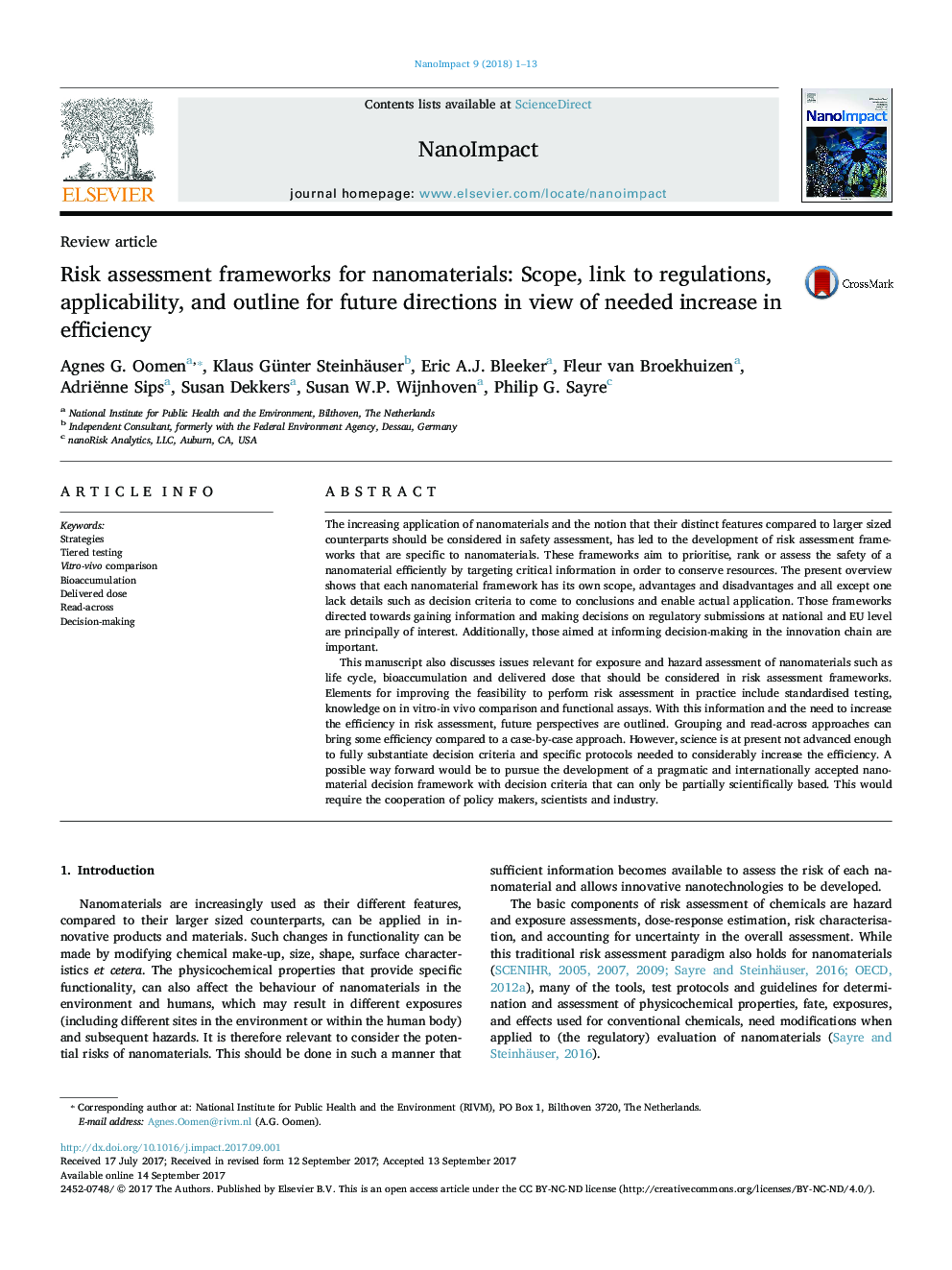| کد مقاله | کد نشریه | سال انتشار | مقاله انگلیسی | نسخه تمام متن |
|---|---|---|---|---|
| 5560688 | 1562018 | 2018 | 13 صفحه PDF | دانلود رایگان |
- Available risk assessment frameworks for nanomaterials are diverse in their aim and scope.
- Almost all frameworks lack details such as decision criteria to enable actual application.
- Elements for improving the feasibility to perform risk assessment in practice are discussed.
- Science is at present not advanced enough to fully substantiate decision criteria needed in risk assessment.
- Pragmatic, internationally accepted decisions to efficiently deal with nanomaterials are needed.
The increasing application of nanomaterials and the notion that their distinct features compared to larger sized counterparts should be considered in safety assessment, has led to the development of risk assessment frameworks that are specific to nanomaterials. These frameworks aim to prioritise, rank or assess the safety of a nanomaterial efficiently by targeting critical information in order to conserve resources. The present overview shows that each nanomaterial framework has its own scope, advantages and disadvantages and all except one lack details such as decision criteria to come to conclusions and enable actual application. Those frameworks directed towards gaining information and making decisions on regulatory submissions at national and EU level are principally of interest. Additionally, those aimed at informing decision-making in the innovation chain are important.This manuscript also discusses issues relevant for exposure and hazard assessment of nanomaterials such as life cycle, bioaccumulation and delivered dose that should be considered in risk assessment frameworks. Elements for improving the feasibility to perform risk assessment in practice include standardised testing, knowledge on in vitro-in vivo comparison and functional assays. With this information and the need to increase the efficiency in risk assessment, future perspectives are outlined. Grouping and read-across approaches can bring some efficiency compared to a case-by-case approach. However, science is at present not advanced enough to fully substantiate decision criteria and specific protocols needed to considerably increase the efficiency. A possible way forward would be to pursue the development of a pragmatic and internationally accepted nanomaterial decision framework with decision criteria that can only be partially scientifically based. This would require the cooperation of policy makers, scientists and industry.
Journal: NanoImpact - Volume 9, January 2018, Pages 1-13
